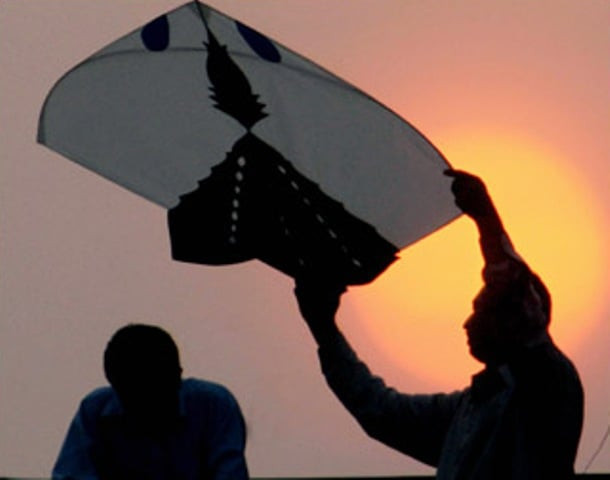Basant: Mixing ideology with law
Why should an innocent seasonal pastime become a revolt against the state?

That the trouble is Punjab-specific is now quite clear. Other provinces are either strangers to kite-flying or have it on a scale that doesn’t bother the government. Outside Pakistan, it is catching on in Afghanistan; but in India, where it should have been widespread, it receives just normal attention. If we maintain that kite-flying is a Punjabi pastime, the other side of Punjab in India is quite unmoved by its Hindu-specific overtones.
This year, Lahore kite-flyers thought they could get Chief Minister Shahbaz Sharif to let them have Basant on two days in the last week of February, but they have been disappointed. The ban has existed since 2005 and has been enforced quite strictly since 2007. Kite-flyers insist that accidents that occur during Basant have nothing to do with the sport, but with the administration of safety rules.
In Faisalabad, where the sport seems to have shifted from Lahore, 18 people were injured in one day. In all, 35 people have been arrested in 30 cases registered in connection with the violation of Section 144. The police seized 68 sacks of kite string, of which 40 were of chemically coated, and more than 8,000 kites.
The injuries were either caused by kite string or due to youths falling from roofs, but there were also injuries from stray bullets from celebratory firing of weapons into the air. This is not good news for the Punjab government, which is determined to lessen Basant-related damage to life and property. The hobby is not restricted to just Lahore, where it saw its high mark in the 1990s, but is spreading to cities where law enforcement is already quite weak.
Malpractices have crept into the art of making kites and string. The biggest harm is done by criminal elements who make metal string or coat the string with inflammable chemicals. Unbreakable imported string, existing only in fantasy in the past, is now a reality and can be bought without much trouble. On the other hand, the ability of state authorities to control illegal activity of all sorts — including possession and use of illegal weapons — has declined over the years and cannot be seen separately from the ‘weak state’ syndrome that overtook Pakistan during the 1900s and came to full flower in the 2000s.
Already, the enforcement of Section 144 against kite-flying is giving rise to incidents that make Punjab look like a police state. The religious lobbies who uphold the ban say Basant is a Hindu festival, mischievously staged to celebrate an incident of insult to the Holy Prophet (pbuh). This is nonsense. The fact is that Basant inflicts a lot of damage, including the damage to electrical systems of big cities through the use of metal string which makes Wapda claim crores of rupees per day from the government.
Kite-flying is part of culture and culture is entertainment for the not-so-rich among us. If this hobby is brought under control — like allowing it in designated places outside the congested urban environment — it can sustain countless people engaged in the cottage industry of kite-production, in addition to attracting special tourism from parts where Basant is not such a rage.
Above all, let us not mix ideology with law. In Afghanistan, the Taliban had banned kite-flying in the name of Islam. In Punjab, it is banned because of hazard to life and property. It is time Lahore did some lateral thinking and allowed kite-flying under special arrangements because its ability to police the ban is equally restricted. Why should an innocent seasonal pastime become a symbol of revolt against the state?
Published in The Express Tribune, February 20th, 2011.














COMMENTS
Comments are moderated and generally will be posted if they are on-topic and not abusive.
For more information, please see our Comments FAQ